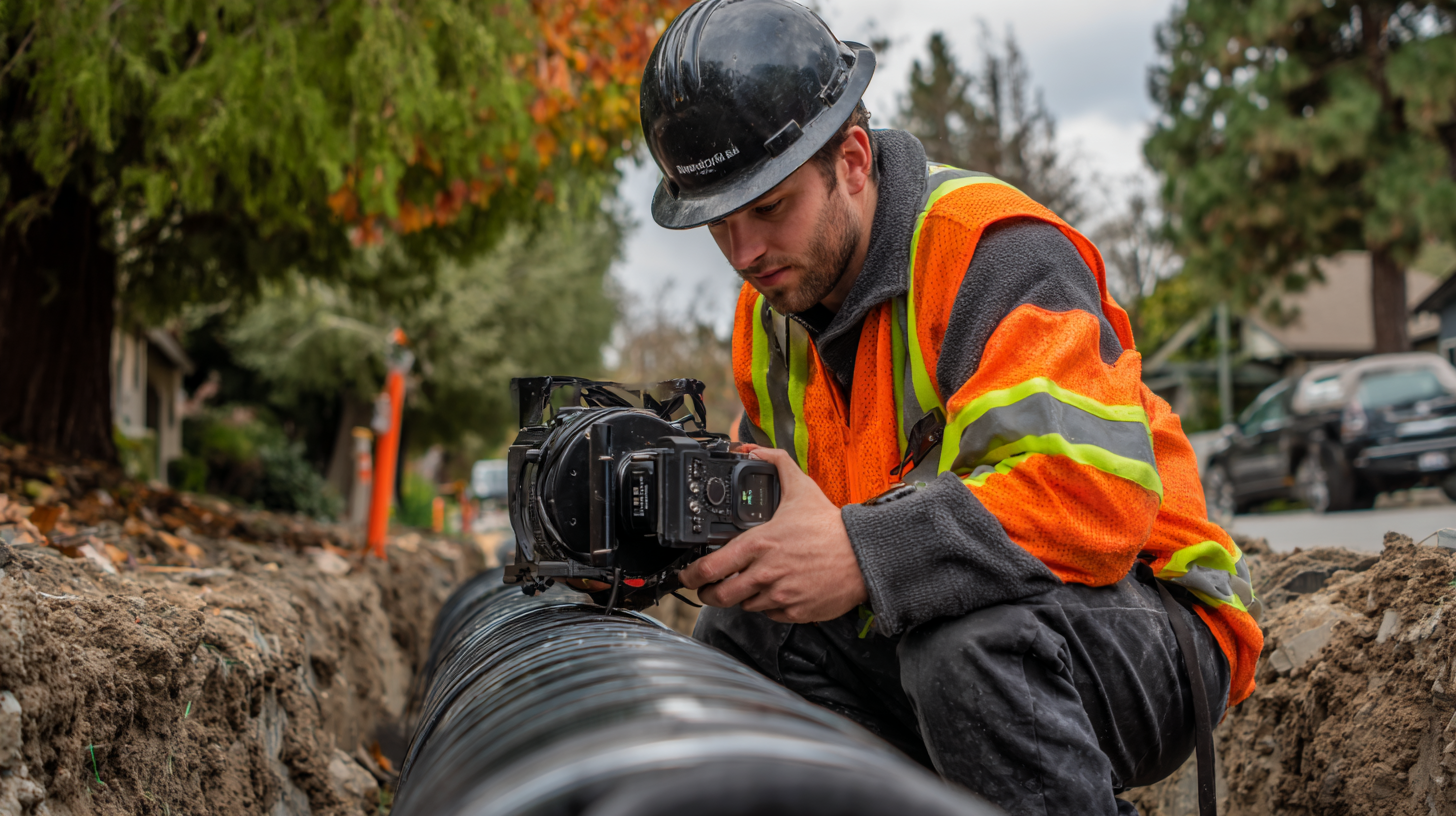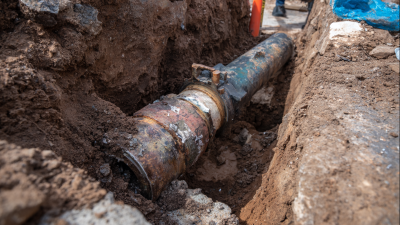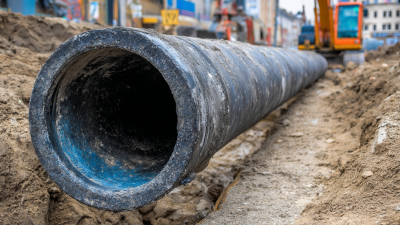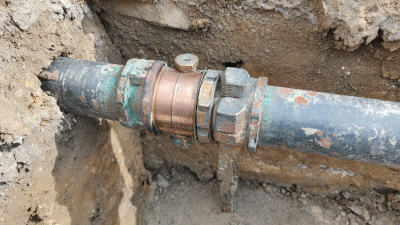Top 5 Innovations in Sewer Pipes: Revolutionizing Waste Management with Advanced Materials
In the ever-evolving landscape of urban infrastructure, the significance of innovative sewer pipes cannot be overstated. As cities grapple with increasing waste management challenges, advanced materials and technologies are paving the way for more efficient and sustainable solutions. According to a report by the American Society of Civil Engineers (ASCE), inadequate sewer infrastructure costs the U.S. economy approximately $3.9 billion annually due to system failures and maintenance issues. The introduction of advanced materials, such as corrosion-resistant composites and self-healing polymers, has the potential to drastically enhance the durability and lifespan of sewer pipes.

Moreover, industry experts predict that the global market for advanced sewer technologies will grow substantially, driven by the increasing demand for effective waste management systems. This article explores the top five innovations in sewer pipes that are not only revolutionizing waste management practices but also contributing to a greener, more resilient urban environment.
Innovative Materials Enhancing Durability and Longevity of Sewer Pipes
The evolution of sewer pipes has taken a significant leap forward with the introduction of innovative materials that enhance their durability and longevity. Traditional materials such as clay and concrete are being replaced by advanced composites that offer superior resistance to corrosion and cracking. For instance, high-density polyethylene (HDPE) and fiberglass-reinforced plastics are gaining popularity due to their lightweight nature and ability to withstand extreme environmental conditions. These materials not only prolong the lifespan of sewer systems but also reduce maintenance costs over time.
Tips for selecting durable sewer pipes include assessing the specific environmental conditions they will face, such as soil acidity and moisture levels. It's crucial to choose materials that are resistant to these factors to prevent premature deterioration. Additionally, consider the installation process, as proper installation can significantly influence the performance and longevity of the pipes.
Another critical aspect of modern sewer pipe innovations is the incorporation of smart technologies. By integrating sensors and monitoring systems into sewer infrastructure, municipalities can detect issues like blockages or leaks in real time. This proactive approach can help extend the life of sewer pipes further, ensuring effective waste management and reducing the risk of costly repairs.
Top 5 Innovations in Sewer Pipes: Revolutionizing Waste Management with Advanced Materials
| Innovation | Material Type | Durability Rating | Longevity (Years) | Environmental Impact |
|---|---|---|---|---|
| High-Density Polyethylene (HDPE) | Plastic | Excellent | 50+ | Low |
| Polyvinyl Chloride (PVC) | Plastic | Good | 45 | Moderate |
| Fiberglass Reinforced Pipe (FRP) | Composite | Excellent | 70+ | Low |
| Ductile Iron Pipes | Metal | Good | 100+ | High |
| Concrete with Anti-Corrosion Coating | Concrete | Very Good | 75+ | Moderate |
Smart Sewer Systems: Integrating IoT for Efficient Waste Management
The integration of Internet of Things (IoT) technology into sewer systems is transforming the way we manage waste. Smart sewer systems utilize sensors and data analytics to monitor the flow of wastewater in real-time, allowing for proactive maintenance and timely responses to potential blockages or spills. This innovation not only enhances operational efficiency but also significantly reduces environmental risks associated with sewer overflows.
Tip: To leverage smart sewer technology effectively, municipalities should invest in training for their personnel to use data analytics tools. Understanding data trends can help in making informed decisions for infrastructure improvements and resource allocation.
Moreover, smart sewer systems can also facilitate better public health management. By analyzing data collected from the sewer systems, cities can identify patterns related to disease outbreaks or pollution levels. This information allows for rapid intervention, thereby protecting community health and safety.
Tip: Collaboration with tech companies can enhance the development of tailored IoT solutions, ensuring that the specific needs of the community are met while maximizing the return on investment in wastewater management technologies.

Eco-Friendly Solutions: Biodegradable and Recyclable Pipe Options
As the world shifts towards sustainable waste management solutions, innovations in sewer pipes are making significant strides. Biodegradable and recyclable pipe options are garnering attention as companies seek alternatives to traditional plastics, which have long posed environmental challenges. The global biodegradable plastics market is expected to grow substantially, projected to reach USD 88.71 billion by 2034, up from an estimated USD 19.36 billion in 2026. This growth illustrates a burgeoning demand for eco-friendly materials in various industries, including waste management.
The development of biodegradable pipes not only helps address the growing concerns about plastic pollution but also aligns with increasing regulatory pressures to minimize single-use plastics. Many organizations are pivoting toward solutions that incorporate paper and bioplastic alternatives, facilitating a shift in waste reduction strategies. Complementing this are advancements in technologies that offer eco-friendly corrosion protection, capturing the interest of various sectors that prioritize sustainability. Such innovations are essential as we strive for a greener future, making revolutionary changes in the infrastructure of waste management.

Advanced Diagnostic Technologies for Proactive Sewer Maintenance
The advent of advanced diagnostic technologies has transformed sewer maintenance by shifting from reactive to proactive methods. Traditional sewer systems often relied on visual inspections and reactive repairs, leading to significant breakdowns and costly overhauls. However, recent industry reports, such as the Global Water Intelligence's 2022 analysis, reveal that integrating advanced diagnostic tools can reduce maintenance costs by up to 30%. Technologies like remote sensing, CCTV inspections, and acoustic monitoring allow municipalities to detect issues early, effectively predicting failures before they escalate.
Additionally, predictive analytics, bolstered by the Internet of Things (IoT), have begun to play a critical role in wastewater management. For instance, the Water Research Foundation's findings suggest that leveraging real-time data from sensor-equipped sewer systems can enhance decision-making processes, improving system reliability and operational efficiency. This not only helps in prioritizing maintenance tasks but also extends the lifespan of critical infrastructure, with reports indicating potential lifespan increases by up to 20%. By investing in these advanced diagnostic technologies, cities can ensure a more resilient waste management system that keeps pace with growing urban demands.
Top 5 Innovations in Sewer Pipes: Revolutionizing Waste Management
Nanotechnology Applications for Reduced Corrosion and Enhanced Flow Efficiency
Nanotechnology is poised to play a transformative role in the evolution of sewer pipes, fundamentally changing the landscape of waste management. By integrating nanomaterials into the construction of pipes, manufacturers can significantly enhance their resistance to corrosion, prolonging their lifespan and reducing the frequency of costly repairs and replacements. These advanced materials, infused with nanoparticles, create a protective barrier that minimizes the wear and tear caused by harsh wastewater conditions, making them ideal for long-term use in urban infrastructure.
In addition to improved durability, nanotechnology also enhances flow efficiency within sewer systems. The application of nanostructured surfaces reduces friction and prevents the buildup of sludge and obstructions. This streamlined flow not only optimizes performance but also helps in minimizing blockages that often lead to overflow incidents. As cities continue to grapple with aging infrastructure and increasing waste management demands, the integration of nanotechnology in sewer pipes represents a crucial advancement, ensuring effective waste disposal and contributing to a more sustainable urban environment.
Related Posts
-

Essential Guide to Understanding Main Sewer Line Repair: What Homeowners Need to Know
-

How to Choose the Right Sewer Pipe Sleeve for Your Plumbing Needs
-

How to Effectively Utilize Pipe in Pipe Repair Techniques for Long-lasting Solutions
-

Unlocking the Advantages of Pipe Sleeve Solutions for Global Procurement
-

Creative Applications of Sewer Pipe Sleeve Repair Techniques
-

Why No Dig Pipe Repair is the Future of Sustainable Plumbing Solutions

